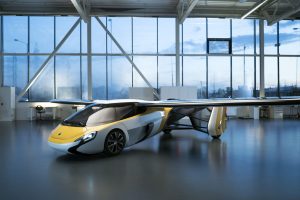This article was originally published in the
By the end of this century some 80 to 90 percent of the people on this planet will be living in cities, according to a report issued by the United Nations Department of Economic and Social Affairs. The current world population of 7.6 billion is predicted to reach 8.6 billion by the year 2030, 9.8 billion by 2050 and 11.2 billion by 2100.

Traffic everywhere is going to get a lot worse. Already today, every large urban center around the world—while providing amazing sights and cultural experiences—endures bouts of rush-hour congestion. The issue isn’t with any single vehicle, but with the entire system of vehicles and roads that connect city inhabitants to their destinations. Public transportation helps, but when you are adding 83 million new humans a year, the world is on track to a gridlock nightmare well before 2100.
How to address the challenges of ground-level urban transportation? One way is to move into the skies. Urban Air Mobility (UAM), aka the 3rd Aerospace Revolution, is a hot topic these days. Centered on Environmental Sustainability (electrification, low-noise, recyclable parts, etc.), the main ambition of UAM is to extend urban transportation from 2D to 3D by means of safe, clean and affordable concepts. This has caught the attention of aerospace and automotive industries around the globe, which are investing considerable time and funds into developing personal and/or air-taxi vehicles that will get people moving above the streets.
There are currently more than 50 companies developing UAM technology, with Uber planning for initial air-taxi service in Dallas and Los Angeles by 2023. If you attended the Consumer Electronics Show (CES) this year, you saw exhibits from Bell, Volocopter, and SureFly, in addition to Dassault Systèmes.

Many of the air vehicles that leading companies (and some innovative startups as well) are introducing in the nearer term rely on hybrid-electric propulsion systems, since electric battery energy storage technologies are still maturing. But the all-electric, Vertical Take-off and Landing (eVTOL) vehicle is the holy grail for everyone, given its low emissions and lower-noise potential, a winning combination in a crowded city. On a smaller scale, another important UAM application is unmanned air vehicles (UAVs), especially “delivery drones” that can help cut down on car traffic by bringing goods directly to the consumer’s door. Whatever the vehicle, while many of them share physical similarities with existing rotorcraft like helicopters and tiltrotors, they also have unique propulsion and guidance parameters dictated by the close quarters of urban space.
Read the more on the future of aviation in The Simulia Blog.

